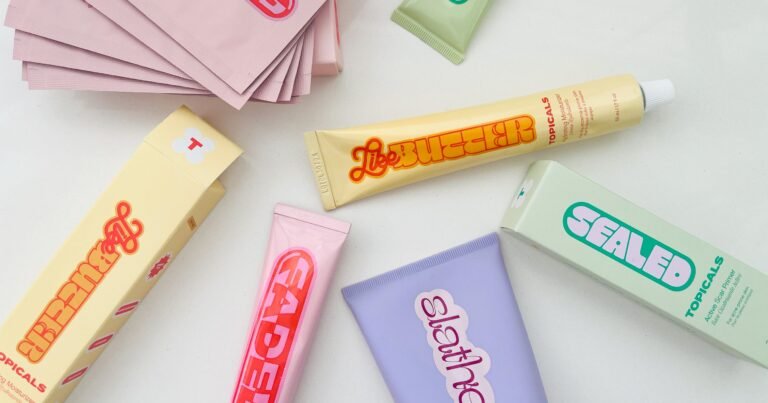Does toothpaste help with pimples?

Introduction
Many people believe that using toothpaste can help get rid of pimples. They often reach for this common product, hoping it will quickly dry out and shrink their acne.
However, it’s important to know the facts about this practice:
- Limitations: Toothpaste might provide temporary relief for some people, but it doesn’t tackle the underlying causes of acne.
- Potential Risks: Using toothpaste for a long time can irritate your skin, cause allergic reactions, and disrupt its natural protective barrier.
In this article, we’ll delve into:
- The science behind how pimples form and what factors contribute to their development.
- The history of using toothpaste as an acne remedy and why some people still believe in it despite scientific doubts.
- The specific ingredients in toothpaste that could affect your skin.
- The dangers of relying on toothpaste as a treatment for acne.
- Safer and more effective alternatives supported by research.
By understanding these topics, you’ll be able to make better choices about your skincare routine.
Understanding Acne: Causes and Types of Pimples
Acne is a common skin condition that affects millions of people worldwide. Understanding the underlying causes of acne is crucial for effective management. The formation of pimples occurs through several interrelated factors:
1. Hormones
Fluctuations in hormone levels, particularly during puberty, menstruation, or pregnancy, can lead to increased oil production in the skin.
2. Bacteria
Propionibacterium acnes, a bacteria naturally found on the skin, can multiply rapidly when hair follicles become clogged. This can lead to inflammation and the development of pimples.
3. Excess Oil Production
Sebaceous glands produce sebum, an oily substance that helps protect the skin. Excessive sebum can clog pores, creating an environment conducive to acne.
Different individuals experience varying susceptibility to acne based on their skin types. Recognizing these differences can help tailor treatment approaches:
- Oily Skin: Characterized by enlarged pores and a shiny appearance. Individuals with oily skin are more prone to acne due to excess oil production.
- Dry Skin: Often experiences flakiness and tightness. While less likely to develop severe acne, dry skin can suffer from irritation if treated with harsh products.
- Combination Skin: A mix of both oily and dry areas. This type requires careful product selection to avoid over-drying or clogging pores.
- Sensitive Skin: Prone to redness and irritation. People with sensitive skin should be cautious with treatments, as some may exacerbate reactions.
Understanding how pimples form and recognizing your specific skin type are essential steps in choosing the right treatment options for effective acne management.
The Popularity of Toothpaste as a Home Remedy for Pimples
The use of toothpaste as a home remedy for treating pimples has gained traction over the years, fueled by various popular myths and anecdotal evidence. Many individuals have turned to their bathroom shelf in search of a quick fix for acne, often relying on toothpaste as an accessible solution.
Historical Context
Historically, toothpaste has been suggested as a remedy due to its availability and perceived effectiveness. When faced with an unexpected breakout, many people seek immediate relief. Toothpaste’s drying properties can seem like a logical choice, especially given its role in oral care. The idea that it could also help with blemishes gained popularity through word-of-mouth and online forums.
In the past, certain ingredients found in toothpaste were thought to combat pimples effectively. For instance:
- Triclosan: Initially included in some formulations for its antibacterial properties.
- Baking soda: Known for its exfoliating capabilities and often touted within DIY skincare circles.
While these components may have contributed to the belief that toothpaste works wonders against acne, scientific scrutiny reveals a different narrative.
Anecdotal Success Stories
Despite limited scientific support, anecdotal success stories persist among users who swear by this method. Many people share personal experiences about how applying toothpaste overnight led to reduced pimple size or quicker healing times. These testimonials often circulate on social media platforms and beauty blogs, creating a sense of community endorsement.
Factors contributing to this belief include:
- Immediate results: Users report a temporary reduction in redness or swelling after application.
- Cost-effectiveness: Toothpaste is generally inexpensive and readily available compared to specialized skincare products.
- Ease of access: It is common household item that most people already own.
However, such claims can be misleading. Individual skin types vary significantly; what works for one person may not yield the same results for another. Additionally, relying solely on toothpaste can lead to adverse effects, including irritation and exacerbation of acne.
The Reality Check
Experts caution against using toothpaste as a treatment option due to potential long-term damage to the skin’s barrier. The American Academy of Dermatology explicitly advises against this practice, emphasizing that while it might provide superficial benefits temporarily, the risks outweigh any perceived advantages.
Understanding historical context and anecdotal evidence surrounding toothpaste as an acne treatment helps clarify why many continue to rely on this method despite warnings from dermatological professionals.
The Ingredients in Toothpaste That May Affect Your Skin
1. Alcohol and Hydrogen Peroxide: The Double-Edged Sword for Pimples?
Toothpaste often contains ingredients like alcohol and hydrogen peroxide, which are commonly believed to help reduce the size of pimples. These components act as drying agents, targeting the excess oil and moisture that can contribute to acne formation. While this may provide a temporary solution, the underlying effects on your skin can be detrimental.
How Alcohol and Hydrogen Peroxide Work
- Alcohol: Known for its antiseptic properties, alcohol can kill bacteria on the skin’s surface. This can lead to a reduction in pimple size shortly after application.
- Hydrogen Peroxide: Similar to alcohol, hydrogen peroxide also possesses antibacterial qualities. It can create a drying effect on pimples, making them appear smaller.
Despite these immediate benefits, both ingredients can cause significant problems when used over time.
Risks of Prolonged Use
- Dryness: Continuous application of products containing alcohol or hydrogen peroxide can strip your skin of its natural oils. This excessive dryness can lead to irritation, flakiness, and even an increase in acne due to compensatory oil production.
- Irritation: Many individuals experience redness or burning sensations after using toothpaste containing these substances. This is particularly concerning for those with sensitive or acne-prone skin.
The potential for irritation increases with repeated use, as the skin barrier becomes compromised. When you rely solely on alcohol or hydrogen peroxide-containing products for acne treatment, you risk creating a cycle where your skin becomes more reactive to common irritants.
Alternative Perspectives
Some users may report anecdotal success from using these ingredients in toothpaste as quick fixes for their breakouts. However, it’s crucial to differentiate between short-term relief and long-term skin health. While these ingredients might temporarily reduce pimple visibility, they do not address the underlying causes of acne.
Informed Choices Matter
To make better choices regarding acne treatment:
- Consider Your Skin Type: If you have oily or combination skin, you might feel tempted to use drying agents. However, understanding your unique skin needs is essential.
- Recognize Signs of Irritation: If you notice increased redness or sensitivity after using toothpaste with alcohol or hydrogen peroxide, it may be time to reconsider your approach.
The risks associated with prolonged use of these toothpaste ingredients should not be overlooked. Skin irritation can manifest in various ways, including persistent breakouts or allergic reactions that worsen rather than improve your condition.
Why Scientific Backing Matters
While many people may swear by home remedies like toothpaste for treating pimples, scientific evidence supports alternative treatments that are gentler yet effective. Products formulated specifically for acne treatment often contain carefully selected active ingredients that target the root causes without compromising skin integrity.
Understanding how alcohol and hydrogen peroxide affect your skin is vital in choosing the right approach to managing acne. The temptation may exist to resort to quick fixes; however, informed decisions lead to healthier outcomes in the long run.
2. Baking Soda: A Controversial Exfoliant for Active Breakouts?
Baking soda, a common ingredient in many toothpaste formulations, is often hailed for its drying properties. When it comes to acne-prone skin, its role can be quite complex. Here are some key points to consider:
1. Drying Agent
Baking soda acts as a drying agent, which may temporarily reduce the size of a pimple by absorbing excess oil. This can provide a quick fix for those seeking immediate relief from breakouts.
2. Exfoliating Effects
The gritty texture of baking soda allows it to function as a mild exfoliant. It can help remove dead skin cells, which may contribute to clogged pores. However, the benefits can quickly turn into drawbacks.
3. Risks of Overuse
Frequent application of baking soda on inflamed and sensitive skin can lead to irritation. Its alkaline nature can disrupt the skin’s natural pH balance, causing redness and even worsening acne over time.
4. Skin Irritation
Many individuals have reported experiencing adverse reactions after using baking soda on their skin. This includes dryness, peeling, and increased sensitivity, particularly if used in conjunction with other harsh ingredients like alcohol or hydrogen peroxide.
In summary, while baking soda found in toothpaste may offer temporary benefits as a drying agent and exfoliant, its long-term effects on acne-prone skin can be detrimental. Your skin’s health deserves more nuanced care than what baking soda alone can provide. Exploring safer alternatives is advisable for effective treatment without compromising your skin barrier.
The Dark Side of Relying on Toothpaste for Pimples: Risks You Should Know About
1. Disruption of Your Skin’s Natural pH Balance: Why It Matters More Than You Think!
Toothpaste, while often touted as a quick fix for pimples, poses significant risks to your skin’s health. One major concern is its potential to disrupt the skin’s natural pH balance. The skin’s surface typically has a slightly acidic pH, ranging from 4.5 to 5.5. This acidity is crucial for maintaining a healthy barrier that protects against pathogens, irritants, and moisture loss.
Using alkaline products like toothpaste can drastically alter this delicate balance. Here’s how:
- Alkaline Nature: Most toothpastes have a higher pH level, often between 7 to 9. Applying such products directly onto the skin can lead to an increase in alkalinity.
- Skin Barrier Damage: An altered pH can weaken the skin barrier. This damage can result in increased permeability, making the skin more susceptible to irritation and inflammation.
- Increased Breakouts: When the skin’s pH is disrupted, it may trigger sebaceous glands to overproduce oil in an attempt to restore balance. Excess oil can contribute to clogged pores and exacerbation of acne.
The consequences of this disruption can be particularly troubling for those with sensitive or acne-prone skin. An imbalanced pH may not only lead to more breakouts but also increase redness and irritation.
Understanding the Importance of pH in Skincare
Maintaining the right pH level is essential for several reasons:
- Microbiome Health: The skin hosts beneficial bacteria that thrive in acidic environments. Disrupting the pH can create conditions that allow harmful bacteria to flourish.
- Moisture Retention: A balanced pH helps retain moisture in the skin. When this balance is compromised, dehydration can occur, leading to dry and flaky patches that worsen acne appearances.
- Acne Flare-Ups: Research indicates that an imbalanced skin environment encourages inflammatory responses that may worsen existing acne or promote new breakouts.
Recommendations Against Toothpaste Use for Acne
The American Academy of Dermatology strongly advises against using toothpaste for treating pimples due to these concerns. Many individuals report initial success with reduced swelling or size of their pimples after applying toothpaste; however, these results are often temporary and come with risks that outweigh benefits.
Common experiences include:
- Short-Term Solutions: While some users experience a drying effect from certain ingredients in toothpaste, such as baking soda or hydrogen peroxide, these same ingredients can lead to longer-term issues like irritation or redness.
- Potential Allergies: People may develop allergic reactions to various components found in toothpaste (e.g., flavoring agents or preservatives). Symptoms might include hives, itching, or even severe rashes that necessitate medical attention.
Final Thoughts on Skin Health
With growing awareness around skincare ingredients and their effects on overall health, many are turning toward alternatives backed by scientific research. Products formulated specifically for acne treatment often contain active ingredients like salicylic acid or benzoyl peroxide which target acne-causing bacteria without compromising your skin’s natural defenses.
Prioritizing your skin’s health means understanding what works best for your individual needs rather than relying on unverified home remedies like toothpaste. Educating yourself about product formulations and seeking professional guidance can help you make informed choices regarding effective treatments while safeguarding your skin barrier from potential harm.
2. Allergic Reactions and Irritation: When Toothpaste Turns into Your Skin’s Worst Enemy!
Using toothpaste as a spot treatment for pimples may seem like a quick fix, but it can lead to various allergic reactions and skin irritation. Many individuals who have tried this method report experiencing:
- Redness: A common reaction where the skin becomes inflamed or flushed.
- Rashes: Development of itchy, irritated patches that can spread beyond the initial application site.
- Dryness and Peeling: The harsh ingredients in toothpaste can strip moisture from the skin, leading to flakiness.
The potential long-term damage from toothpaste usage extends beyond temporary discomfort. Continued application can result in significant skin barrier damage. This protective barrier is crucial for maintaining your skin’s moisture levels and shielding it from environmental aggressors. Disruption of this barrier due to the alkaline nature of toothpaste can lead to:
- Increased susceptibility to infections
- Worsening acne conditions
- Long-lasting irritation that might require medical intervention
The American Academy of Dermatology explicitly recommends against using toothpaste for acne. Their guidance highlights the risks associated with relying on such unproven home remedies. Instead of achieving clearer skin, you may face pH balance issues in your skincare routine, further complicating your acne management.
Choosing products specifically designed for acne treatment is essential for both immediate relief and long-term skin health. Prioritizing scientifically-backed alternatives will help safeguard your skin’s integrity while effectively targeting breakouts.
Safer Alternatives to Toothpaste for Treating Pimples Effectively
Toothpaste may seem like a quick fix for pimples, but the potential for irritation and long-term skin damage makes it a risky choice. Instead, consider these scientifically backed alternatives that effectively treat pimples without harming the skin barrier:
1. Salicylic Acid-Based Spot Treatments
Salicylic acid is a beta hydroxy acid (BHA) known for its ability to penetrate pores and dissolve excess oil. It is effective in treating acne due to its anti-inflammatory and exfoliating properties.
Pros:
- Targets the source of breakouts by unclogging pores.
- Reduces swelling and redness associated with pimples.
- Gentle enough for most skin types when used correctly.
Cons:
- Can cause dryness or irritation if overused.
- May take time to see significant results.
2. Benzoyl Peroxide Creams
Benzoyl peroxide works by killing acne-causing bacteria and reducing inflammation. It is widely recommended by dermatologists for treating mild to moderate acne.
Pros:
- Effectively reduces the number of acne-causing bacteria on the skin.
- Helps prevent future breakouts by keeping pores clear.
Cons:
- Can result in dryness or peeling, especially for those with sensitive skin.
- May bleach fabrics, requiring careful application.
3. Natural Remedies
For those preferring natural solutions, consider options like tea tree oil or willow bark extract. Both have anti-inflammatory properties that can soothe irritated skin.
Tea Tree Oil:
- Known for its antimicrobial effects against acne bacteria.
- Can be applied directly but should be diluted with a carrier oil to avoid irritation.
Willow Bark Extract:
- Contains salicin, which has similar properties to salicylic acid.
- Offers gentle exfoliation and can reduce redness.
Reader Experiences
Many individuals share varied experiences with these treatments:
- Some find salicylic acid more effective due to quick absorption and immediate relief from swelling.
- Others prefer benzoyl peroxide for its powerful antibacterial properties but caution against excessive use due to irritation.
In choosing an effective treatment for pimples, consider your skin type, sensitivity, and personal preferences. Consulting a healthcare provider or dermatologist can provide personalized recommendations tailored to your needs. Exploring these alternatives not only protects your skin barrier but also promotes healthier skin in the long run.










